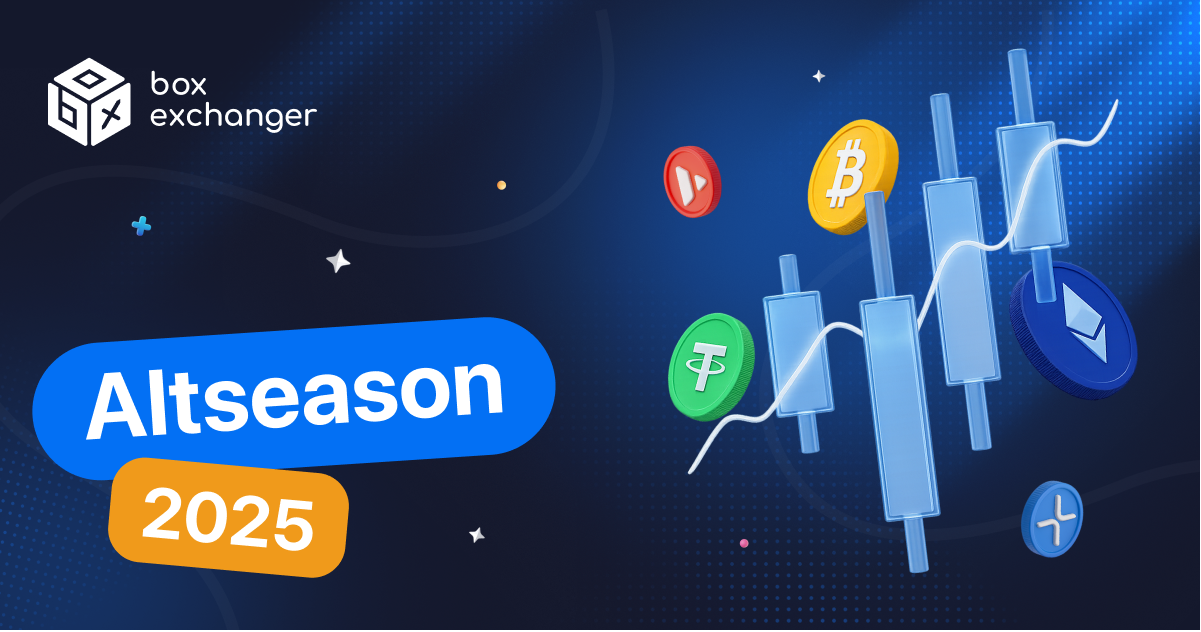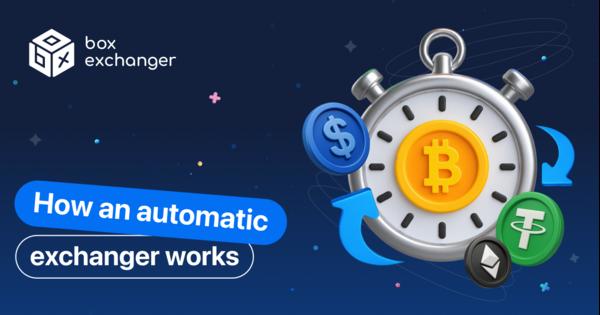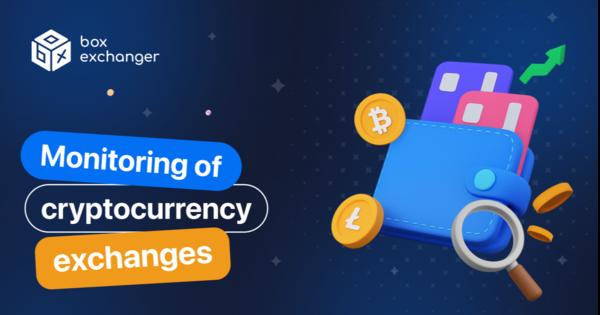5 min.
Altseason 2025
Added: September 22, 2025

Introduction
The crypto market has entered a phase where interest in altcoins is growing rapidly, and the phrase ‘alt season 2025’ is heard in almost every discussion. Global market capitalisation in August-September remained at around $3.9-4.1 trillion, with Bitcoin's share fluctuating around 55-57%, creating room for capital rotation into altcoins. These figures are confirmed by CoinMarketCap. Many analytical reviews consider altseason 2025 to be the next stage of the cycle, given the Bitcoin halving that ended in April and institutional flows into spot ETFs on ETH.
What is this period?
The term ‘alt season’ describes a phase when most of the largest altcoins outperform BTC in terms of returns over a selected period. In practice, the Altcoin Season Index serves as a benchmark: when the threshold of 75% (of the top 50 coins excluding stablecoins) is exceeded, the market considers that the phase of altcoin dominance has begun. From a formal point of view, alt season is a phase of accelerated demand for risky crypto assets after a strong Bitcoin rally, when investors actively diversify their portfolios.
Factors influencing dynamics in 2025
- BTC supply after halving. The fourth reduction in miner rewards occurred in April 2024 (block 840,000). Historically, this increases scarcity and stimulates profit shifting to altcoins in the next cycle.
- ETH ETF in the US. Since July 2024, spot funds on Ether have been traded on exchanges; a number of estimates expected 10-25% of Bitcoin ETF inflows due to the absence of staking in fund structures. The very availability of the instrument for brokerage accounts increases attention to the Ethereum ecosystem.
- Stablecoin Act (GENIUS Act). In July 2025, the US passed a basic federal act for payment stablecoins: reserves must be covered by liquid assets, and monthly disclosures are required. Regulatory certainty increases trust and liquidity in DeFi, which typically supports altcoins.
- Record black chip prices. In August, BTC updated its historical highs above $124,000, while ETH approached $4.9k, which often precedes a rotation phase in mid- and small-cap.
- L2 infrastructure. According to L2BEAT and industry reviews, layer two networks hold tens of billions of dollars in value under protection and continue to grow in usage. This expands the ecosystem's throughput and creates demand for tokens from key L2 projects.
Which altcoins could grow in 2025
1. Smart contract platforms. Ethereum (ETH) remains the base layer for DeFi and tokenisation; the launch of spot ETFs has opened a channel for institutional inflows.
2. Solana (SOL) demonstrates high network activity: tens of millions of active addresses per month and block finalisation of approximately 400-600 ms — a strong signal for ecosystem growth.
3. Layer-2 on Ethereum. Projects with economies tied to transaction volume growth and TVS (value secured) receive fundamental support as L2 expands. L2BEAT statistics confirm the scale of the ecosystem.
4. Decentralised exchanges and derivatives. Fee distribution models in protocols such as GMX generate cash flows for token holders and liquidity providers. According to Token Terminal, such protocols regularly generate significant fees, which strengthens ‘real income’.
5. Oracles and data infrastructure. Oracle networks are increasing their reach and TVS; Messari reports show growth in Pyth metrics for Q2 2025, which indirectly supports demand for native tokens.
Risks and pitfalls
The altcoin market is characterised by sharp swings, and liquidity is unevenly distributed. Inflows into ETFs and a strengthening dollar may temporarily shift the focus to Bitcoin, reducing interest in mid-cap coins. Reuters also points to sensitivity to monetary expectations (e.g., the Fed's rate cycle).
Yield strategies are a separate issue. Staking in PoS networks provides an annual percentage yield of 3-5% for ETH, depending on the validator configuration and MEV, which looks attractive, but the yield is indexed in the token and subject to price volatility.
How to prepare for altcoins in 2025
• Cycle metrics. A classic indicator of the alt season is when more than 75% of the top 50 coins outperform BTC over 90 days. It is also worth tracking BTC's share on CoinMarketCap/TradingView and its total capitalisation.
• Liquidity and turnover. Filter assets by trading volume and order book depth; refer to CoinMarketCap or CoinGecko reports.
• Income components. Dividends from cryptocurrencies in the form of staking and commission distribution work as an analogue of dividend flows in traditional finance (adjusted for tokenomics), as confirmed by LSEG research and Investopedia materials.
• Strategy risks. To calculate the expected return, consider the entry price, token inflation, and team/fund vesting. Cryptocurrency dividends alone do not guarantee a positive outcome without risk management.
• Infrastructure drivers. Keep an eye on updates in L2 networks, statistics on active addresses in Solana/Ethereum, and Messari reports — this data helps to assess user influx and actual load.
Conclusion
The market has reached a point where the alt season is no longer an abstraction and increasingly depends on three factors: post-halving BTC dynamics, institutional channels (ETFs) and performance infrastructure (L2, fast L1). With capitalisation remaining above $3.8-4.0 trillion and BTC's dominance gradually weakening, the window of opportunity for alts is expanding. In this scenario, the alt season looks like a logical continuation of the cycle, and an alt season with an emphasis on platforms, exchange infrastructure and network effects has the potential for a more sustainable phase.
The information presented in this article is for informational purposes only and does not constitute a guide to action, financial advice or investment advice. Cryptocurrency investments involve a high level of risk, and each investor should conduct their own analysis, assess their financial capabilities and consult with professional financial advisors before making investment decisions.
Frequently Asked Questions
Where can I view signals and indices?
The Altcoin Season Index on BlockchainCenter displays the share of coins from the top 50 that have outperformed BTC over 90 days; the threshold is 75%. Additionally, the capitalisation and dominance charts on CoinMarketCap/TradingView are useful.
What areas look promising in 2025?
Smart contract platforms (ETH, Solana), the L2 ecosystem, exchange protocols with fee distribution, and data orchestrators (oracles). Arguments — ETH ETFs, growth in active addresses, and increasing value under protection in L2.
How should ‘cryptocurrency dividends’ be interpreted and when should they be taken into account in a strategy?
In the crypto economy, dividend logic manifests itself through staking and fee distribution. LSEG compares such payments to corporate dividends, and Investopedia describes the basic rules of ETH staking and the typical range of annual returns. Use these flows as a supplement to price and risk assessment.
Also read

October 26, 2025
How an Automatic Exchanger Works
How an automatic exchanger works — in short: the user selects the exchange direction, the system locks the rate, ac...

October 25, 2025
Exchange Service Monitoring
The market for exchanging digital and fiat assets is huge and dynamic: the total daily trading volume of the crypto...

October 20, 2025
How to attract your first customers to a crypto exchange
Are you launching a new service and wondering how to attract your first customers to a crypto exchange quickly and ...